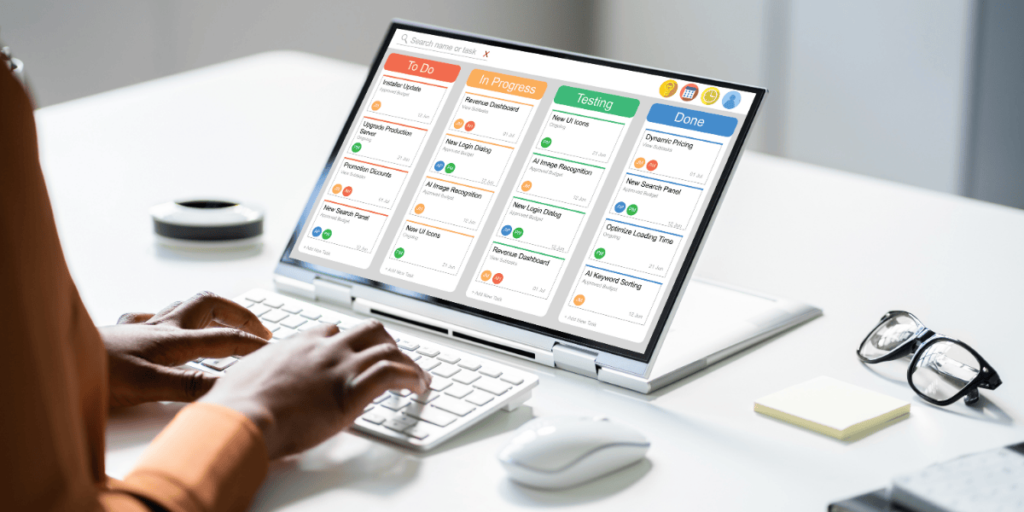Running a private practice comes with its own set of demands, often leaving you pulled in too many directions. Between managing clients, administrative responsibilities, and your personal life, it’s easy to feel like there just isn’t enough time in the day. But carving out time for personal growth, professional development, and the tasks you truly enjoy isn’t just a luxury—it’s key to staying productive and avoiding burnout. In this post, you’ll learn practical ways to create space for what matters most, so you can build a sustainable routine that works for you.
The Overload: Understanding Time Scarcity in Private Practice

As a private practice owner, it can feel like there’s never enough time to get everything done. Between back-to-back client sessions, billing, and the endless stream of emails, the hours slip by before you’ve had a chance to breathe. Time scarcity is a challenge that often leaves you feeling overworked and underwhelmed. But allocating time intentionally for personal, professional, and preferred tasks can bring balance to your day—and your life. Let’s break down these categories and their importance, along with how caring for yourself can indirectly supercharge your practice.
Defining Personal, Professional, and Preferred Tasks
It’s easy to get caught up in the grind, but not every task on your list carries the same weight. By categorizing your responsibilities, you can make more intentional decisions about where your time goes.
- Personal Tasks: These are the daily activities that support your overall well-being and emotional health. Think exercise, meal planning, hobbies, or spending time with loved ones. For example, taking a 30-minute walk between client sessions is more than just a break—it’s a way to reset your mind and body. Personal tasks ensure you’re operating from a place of wellness rather than burnout.
- Professional Tasks: These are the activities directly tied to running and growing your practice. They might include consultations, client documentation, marketing strategies, or even upgrading your skills through continuing education. For instance, dedicating a few hours to streamline your billing system could save you countless hours down the road. Professional tasks keep your practice efficient and your career on track.
- Preferred Tasks: These are the things that light you up—the activities you’d do simply because you enjoy them. Maybe it’s creating a blog for your website, volunteering in a local mental health initiative, or designing a more inviting office space. Preferred tasks are about prioritizing what excites and fulfills you. The value here is simple: when you make time for what you love, work doesn’t feel as heavy.
Each category matters; they’re like the three legs of a stool. Neglect one, and your stability may falter. Recognizing the difference between these types of tasks is the first step in regaining control of your time.
The Productivity Paradox: How Self-Care Boosts Business
It seems counterintuitive to take time away from work to care for yourself, doesn’t it? But self-care isn’t selfish—it’s strategic. By prioritizing yourself, you’re actually setting up your practice for greater long-term success. Think of this as the oxygen mask principle: you can’t help others if you’re running on empty.
Taking time to recharge your energy improves your focus, resilience, and problem-solving skills. For example, starting your day with a short yoga session can help clear your head and set a calm tone before diving into therapy sessions. Or something as simple as scheduling lunch away from your desk can prevent the afternoon slump.
Here’s where things get interesting: when you feel good, you do better work. Activities that boost your mental and physical health—whether it’s mindfulness meditation, journaling, or simply getting enough sleep—can foster creativity and improve your client interactions.
Some examples of self-care practices that pay off in your professional life include:
- Mindfulness or meditation: Helps sharpen focus and reduce stress.
- Exercise: Boosts energy and mood, making you more productive.
- Regular breaks: Enhances clarity, especially when dealing with heavy emotional work.
- Connecting with peers: Networking or peer support groups prevent isolation and provide fresh perspectives.
Self-care isn’t a luxury. It’s the foundation of sustainability, both for your personal health and your practice as a whole. If you’re constantly exhausted, how can you show up fully for clients or tackle that list of professional goals? Simply put, taking care of yourself is the most productive thing you can do.
Strategic Scheduling: Practical Tips for Time Allocation

As a private practice owner, your time is one of your most important resources. With so many demands pulling at your attention, it’s essential to structure your time in a way that supports both your personal and professional goals. Strategic scheduling isn’t about cramming more into your day—it’s about working smarter and focusing on what truly matters. Here’s how you can use practical tools like time blocking, the Eisenhower Matrix, and the Pareto Principle to take control of your time and energy.
Time Blocking for Focused Work
Time blocking is like giving every task on your list its own reserved seat at the table. Instead of juggling multiple priorities at once, you dedicate specific blocks of time to particular activities, helping you stay fully focused on one thing at a time. It’s a simple yet powerful way to cut through the chaos and create a schedule that works for you.
Start by identifying the key tasks you need to tackle each day. Instead of leaving your to-do list open-ended, assign each task a time slot on your calendar. For example, reserve mornings for client sessions when your energy is high, set aside an hour in the afternoon for administrative work, and carve out 30 minutes mid-day for a personal task like taking a walk or meditating. Don’t forget to include buffer time for transitions—you’re not a robot, and your schedule shouldn’t treat you like one.
To make time blocking work for you:
- Batch similar tasks: Group related activities together so you can stay in the zone. For instance, dedicate a block to returning emails or preparing client notes.
- Guard your blocks like appointments: Treat them as non-negotiable meetings with yourself and don’t let distractions creep in.
- Plan for flexibility: Not every day will go as planned, so leave a little wiggle room for unexpected tasks or downtime.
By committing to time blocking, you’re telling your time what to do instead of letting it run away from you.
The Eisenhower Matrix for Prioritization
When everything feels urgent, it’s hard to know where to start. That’s where the Eisenhower Matrix can help. This simple tool divides tasks into four categories based on what’s urgent and important, so you can focus on what matters most and sideline the rest.
Here’s how it works:
- Important and Urgent: Do these tasks immediately. These are high-priority items that can’t wait, like responding to a client emergency or meeting a critical deadline.
- Important but Not Urgent: Schedule these tasks. They’re essential for long-term success, like professional development, marketing, or planning for growth.
- Urgent but Not Important: Delegate these tasks. They may require attention but don’t need you to handle them, like routine admin work.
- Neither Important nor Urgent: Eliminate these tasks. They’re time-wasters—things you can skip altogether, like mindlessly scrolling through social media.
Applying this matrix gives you clarity. For instance, if you realize that updating your website is important but not urgent, you can schedule it for later instead of trying to squeeze it into an already-packed day. By intentionally focusing on what’s important, you can stop putting out fires and start building systems that prevent them.
The Pareto Principle for Efficiency
The Pareto Principle, or the 80/20 rule, is a reminder that not all tasks are created equal. It suggests that 80% of your results likely come from just 20% of your efforts. This means identifying the handful of tasks that make the biggest impact—and pouring your energy into those.
Start by reviewing your to-do list or workload. Ask yourself, which tasks truly move the needle? For example:
- Which activities generate the most revenue? (e.g., client sessions or key marketing strategies)
- What actions improve your efficiency the most? (e.g., upgrading your software or automating billing)
- Which tasks bring you the most joy or personal satisfaction? (e.g., creating content that speaks to your values)
Once you’ve identified your “20%,” make those your priority. This doesn’t mean ignoring the other 80%; it means delegating, simplifying, or spacing out the rest. For instance, if most of your new clients come from referrals, spend your energy strengthening referral relationships rather than investing in low-impact advertising avenues.
By focusing on the tasks with the highest return, you can work less but achieve more—giving you more time for both the work you love and the life you want outside of it.
Strategic scheduling isn’t about doing everything; it’s about doing the right things. With tools like time blocking, the Eisenhower Matrix, and the Pareto Principle, you can reclaim your time and energy while building a practice that thrives sustainably.
The Art of Delegation and Outsourcing

As a private practice owner, your time is one of your most finite resources. You can’t do it all, nor should you try. Delegation and outsourcing aren’t just about lightening your load—they’re essential tools for focusing on what matters most. By shifting certain responsibilities to others, you open up space for growth and sustainability in both your work and personal life.
Identifying Delegatable Tasks
Not everything on your plate requires your personal attention. A major step in effective delegation is learning to separate tasks that truly need your hands-on involvement from those that don’t. It’s easy to hold onto everything out of habit or fear of losing control, but trust me—it’s worth taking a closer look.
Start by making a list of all your regular tasks. This includes administrative work, client management, marketing, and even household responsibilities. Then, ask yourself these key questions for each task:
- Does this require my specific expertise or credentials?
- Is this task repetitive or time-consuming?
- Would someone else be equally (or more) efficient at completing this?
- Does this task detract from higher-value activities, like serving clients or planning for growth?
Tasks like maintaining your calendar, sending appointment reminders, managing social media, or processing invoices are often prime candidates for delegation. These tasks are important but don’t necessarily need your unique input to get done well. Releasing these from your schedule creates space for the work only you can do, such as building relationships, providing care, and meeting your big-picture goals.
Another tip? Don’t wait until you’re overwhelmed to delegate. Think of it as an investment in your future productivity. Easing into outsourcing when you have time to train someone properly ensures a smoother process and better results in the long run.
Finding and Vetting Reliable Support
Once you’ve identified what to delegate, the next step is finding someone you can trust to take over those responsibilities. Whether you’re hiring a virtual assistant, a bookkeeper, or a social media manager, the relationship will only succeed with the right match. Approach this process with care—after all, you’re sharing a piece of your practice with them.
Here’s how to find and vet reliable help:
- Start with clear expectations. Before you even begin your search, outline the tasks you want to delegate and the skills required to do them well. Be as specific as possible. For example, if you’re hiring a virtual assistant to manage your scheduling, you might prioritize someone with experience in client-facing roles or familiarity with scheduling platforms.
- Use trusted sources. Ask for recommendations within your professional network, such as colleagues or business groups, as they’ve likely worked with reliable contractors before. You can also explore platforms where you can review candidates’ portfolios and feedback from other clients.
- Conduct interviews or test projects. A quick conversation can go a long way in gauging communication style and cultural fit. If you’re unsure about committing, consider starting with a small, test project to see how they handle the task. For example, you might ask a potential assistant to organize your weekly calendar or respond to a few non-urgent emails.
- Check references. Don’t hesitate to reach out to previous clients or employers for feedback. Past experiences can give you insight into a candidate’s work ethic, reliability, and ability to meet deadlines.
- Prioritize communication. Good help isn’t just about skills—it’s about how well you can work together. Look for someone who communicates clearly, responds promptly, and is open to feedback. A lack of communication can quickly lead to misunderstandings and missed expectations.
Once you’ve brought someone on board, don’t just hand tasks off and disappear. Provide clear instructions, set goals, and check in regularly to ensure things are running smoothly. Think of delegation as a partnership—it requires collaboration and clear communication to succeed.
By taking the time to find and train reliable support, outsourcing can feel less like a gamble and more like a valuable extension of your team. When the right people are handling the right tasks, you’ll wonder why you didn’t start sooner.
Building Sustainable Habits: Long-Term Strategies for Balance
Creating time for personal, professional, and preferred tasks isn't a one-time effort—it requires consistent action and thoughtful planning. Building sustainable habits helps you maintain balance and ensure long-term productivity without running yourself into the ground. The key lies in making your habits work for you, not against you. By setting practical goals, managing expectations, and tracking your progress, you can make meaningful changes that actually stick.
Setting Realistic Goals and Expectations
Let’s be honest: It’s tempting to set lofty goals in the hopes of achieving more. You might picture juggling a full client load, maintaining a flawless work-life balance, and pursuing new opportunities all at once. But overcommitting can quickly lead to frustration and burnout. The truth is, setting realistic goals isn’t about limiting yourself—it’s about creating clear, achievable targets that keep you moving forward without feeling overwhelmed.
Start small. Instead of setting a goal like “I’ll exercise an hour every day,” aim for something like “I’ll go for a 20-minute walk three times a week.” When your goals feel attainable, you’re more likely to commit to them consistently. Think of it this way: building habits is like planting seeds. You can’t grow a garden overnight, but with regular care, small seeds turn into strong, flourishing plants.
Here are a few strategies to help you set realistic goals:
- Break it down: Big goals are easier to tackle when you split them into smaller steps. For instance, if you want to write a blog post every week, start by outlining your topic one day and drafting a section the next.
- Be specific: Vague goals like “work less” or “relax more” are hard to measure. Instead, say, “I’ll schedule one evening off each week to spend with my family.”
- Account for your capacity: Life happens. Build flexibility into your plans, so unexpected events don’t completely derail you.
Managing expectations is just as important. By acknowledging your limits, you give yourself permission to focus on what matters most. Not every task will get done today, and that’s okay. Balance is about progress, not perfection.
Tracking Progress and Celebrating Successes
Once you set your goals, how do you keep the momentum going? Tracking your progress is one of the most effective ways to stay accountable and motivated. It’s like having a map on a long trip—it helps you see where you’ve been and encourages you to keep heading toward your destination. Plus, tracking your efforts shows you what’s working and what might need tweaking.
Start by choosing a system that works for you. This could be a simple checklist, a journaling habit, or a digital app. For example, you could track your new habit of setting aside time for “preferred tasks” by noting when and how often you’re able to complete them. Seeing those small wins pile up can boost your confidence and keep you going.
What’s equally important? Celebrating your successes. It’s easy to dismiss your efforts and move on to the next task, but pausing to recognize what you’ve accomplished can reinforce the habit and make it feel rewarding. Think of celebration as fuel: it helps you sustain the energy to keep going.
Here are some ways to both track and celebrate:
- Keep a habit tracker: Marking off each day you complete a habit gives you a visual representation of your progress.
- Note the benefits: Write down how the habit has positively impacted your life. Are you feeling more focused? Less stressed?
- Reward yourself: Small rewards—like a favorite treat or an extra hour to yourself—can make a big difference.
Even simple habits deserve recognition. Made it through a week of sticking to your new schedule? Celebrate! Successfully delegated a recurring task? That’s a win. By celebrating these achievements, you’ll reinforce the positive behaviors and maintain momentum.
Tracking your progress and celebrating your successes might feel like small steps, but they’re powerful tools for creating sustainable habits. Over time, these habits can help you build the balance you need to thrive both personally and professionally.
Key Takeaways
Making time for personal, professional, and preferred tasks isn’t just about balancing a busy schedule; it’s about laying the groundwork for a sustainable, fulfilling life and practice. By prioritizing what truly matters, you can improve your productivity, enhance your well-being, and create more meaning in your daily work.
Time management is a skill you can refine, and the strategies discussed—like time blocking, prioritization, and delegation—can help you take control of your time and energy. When you align your schedule with your goals and values, you set yourself up for long-term success without sacrificing your health or happiness.
Start small. Choose one strategy to implement today and see how it shifts your routine. Each step brings you closer to a practice—and a life—that’s not just productive but also sustainable and rewarding.







